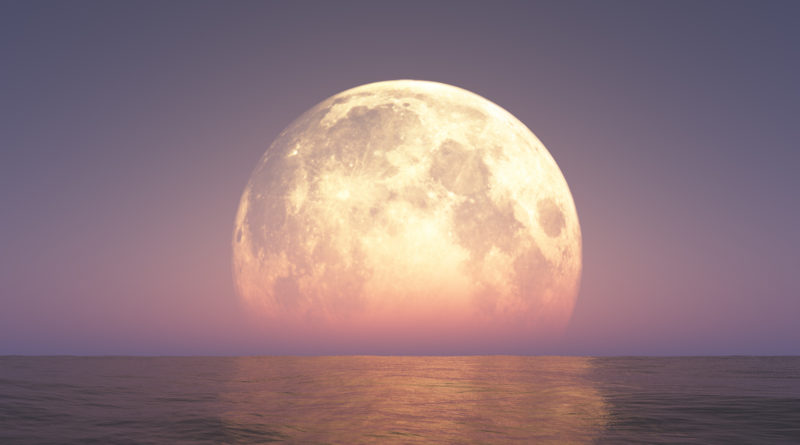Why Was the Moon Pink This Weekend?
624 total views, 2 views today
If you spent time outside in the evening this weekend, there’s a good chance you noticed the full moon on Saturday. This moon is known as the Pink Moon, but why? Read on below to learn about the origins of the name, as well as some other interesting facts about full moon events.
It wasn’t actually pink
In case you’re wondering if you somehow missed something, no, the moon wasn’t actually pink. The April “pink moon” is actually named that because of the plant Phlox subulata, a North American pink wildflower that blooms in April and early spring.
Although more of the Earth’s surface is visible during a full moon, it’s actually more difficult to see the details of the moon during these events. Since the sun shines directly on the full face of the moon, there aren’t as many shadows created as usual, meaning the hills and craters of the moon are more difficult to see with the naked eye.
Was the Pink Moon a supermoon?
This weekend’s Pink Moon was not classified as a supermoon, meaning it wasn’t at the closest position the moon gets to the Earth in its orbit. This phenomenon typically happens two to three times per year and makes the moon look much larger than usual.
The supermoon events in 2022 will be Tuesday, June 14, Wednesday, July 15, and Friday, August 12. There will also be two lunar eclipses and two solar eclipses this year.
Other names for the Pink Moon
While the Pink Moon is a common name for this full moon event, there are a variety of names given to it in different religions, countries, and cultures. For example, Buddhists in Sri Lanka call the Pink Moon Bak Poya, because it commemorates the Buddha’s second visit to Sri Lanka.
As the full moon directly before Easter, the April full moon is known as the Paschal moon in many Christian cultures, and Hindu people call this moon Hanuman Jayanti in celebration of Lord Hanuman, one of their deities.
Other full moon events
There are eight full moons left this year, and you may not know that each full moon event actually has a name assigned to it. Many of these names stem from different ancient cultures, from the Native Americans to the Anglo-Saxons. The most commonly known names in the U.S. for the rest of this year’s full moons are:
- Flower moon (May 16)
- Strawberry moon (June 14) – Supermoon
- Buck moon (July 13) – Supermoon
- Sturgeon moon (August 11) – Supermoon
- Harvest moon (September 10)
- Hunter’s moon (October 9)
- Beaver moon (November 8)
- Cold moon (December 7)
What’s the best way to see future full moon events?
The best way to see the rest of this year’s full moon events is to visit a dark place with very little ambient light. If you live in a big city it might be worth taking a trip out to the country to get a better view, especially for any of the three supermoons this summer.

